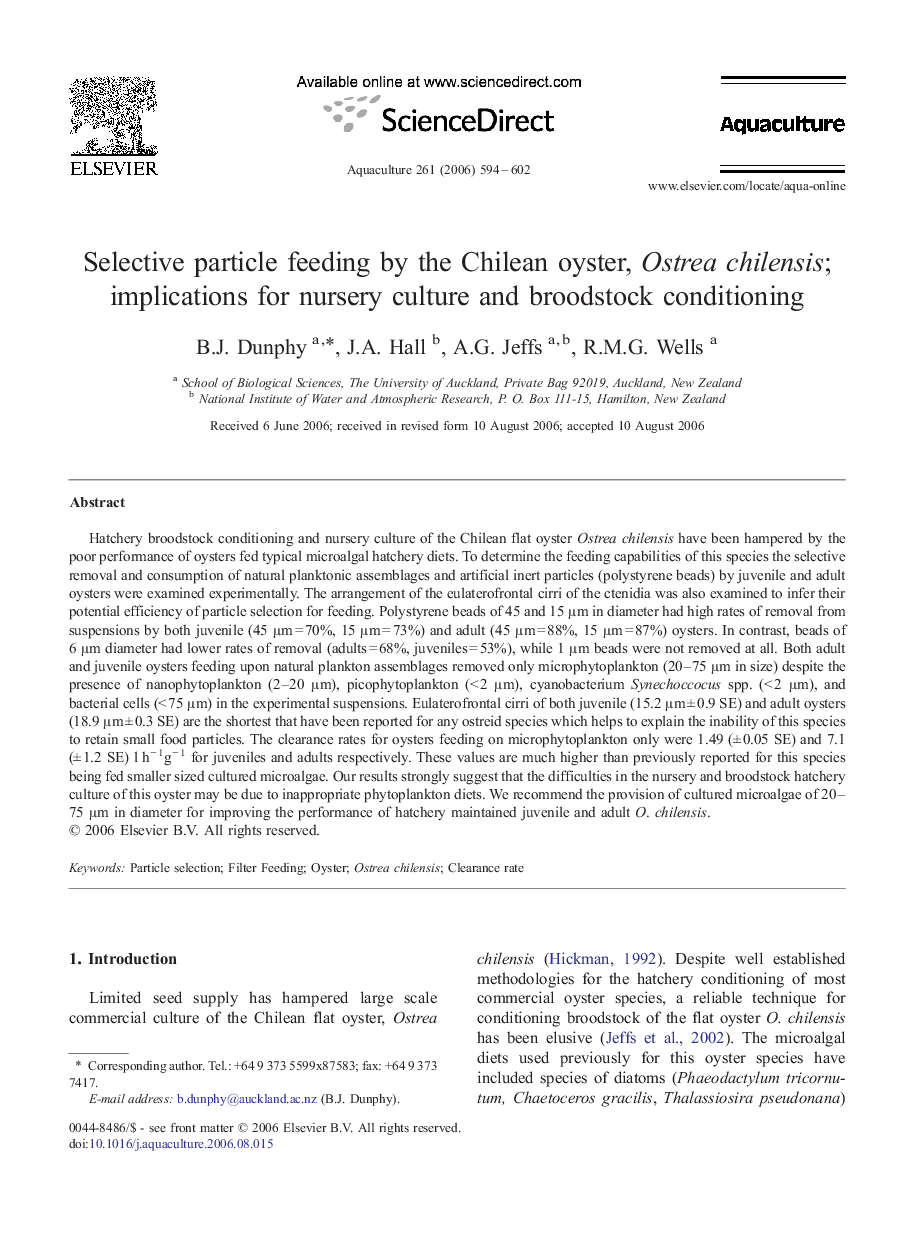| کد مقاله | کد نشریه | سال انتشار | مقاله انگلیسی | نسخه تمام متن |
|---|---|---|---|---|
| 2425426 | 1105339 | 2006 | 9 صفحه PDF | دانلود رایگان |

Hatchery broodstock conditioning and nursery culture of the Chilean flat oyster Ostrea chilensis have been hampered by the poor performance of oysters fed typical microalgal hatchery diets. To determine the feeding capabilities of this species the selective removal and consumption of natural planktonic assemblages and artificial inert particles (polystyrene beads) by juvenile and adult oysters were examined experimentally. The arrangement of the eulaterofrontal cirri of the ctenidia was also examined to infer their potential efficiency of particle selection for feeding. Polystyrene beads of 45 and 15 μm in diameter had high rates of removal from suspensions by both juvenile (45 μm = 70%, 15 μm = 73%) and adult (45 μm = 88%, 15 μm = 87%) oysters. In contrast, beads of 6 μm diameter had lower rates of removal (adults = 68%, juveniles = 53%), while 1 μm beads were not removed at all. Both adult and juvenile oysters feeding upon natural plankton assemblages removed only microphytoplankton (20–75 μm in size) despite the presence of nanophytoplankton (2–20 μm), picophytoplankton (< 2 μm), cyanobacterium Synechoccocus spp. (< 2 μm), and bacterial cells (< 75 μm) in the experimental suspensions. Eulaterofrontal cirri of both juvenile (15.2 μm ± 0.9 SE) and adult oysters (18.9 μm ± 0.3 SE) are the shortest that have been reported for any ostreid species which helps to explain the inability of this species to retain small food particles. The clearance rates for oysters feeding on microphytoplankton only were 1.49 (± 0.05 SE) and 7.1 (± 1.2 SE) l h− 1g− 1 for juveniles and adults respectively. These values are much higher than previously reported for this species being fed smaller sized cultured microalgae. Our results strongly suggest that the difficulties in the nursery and broodstock hatchery culture of this oyster may be due to inappropriate phytoplankton diets. We recommend the provision of cultured microalgae of 20–75 μm in diameter for improving the performance of hatchery maintained juvenile and adult O. chilensis.
Journal: Aquaculture - Volume 261, Issue 2, 24 November 2006, Pages 594–602